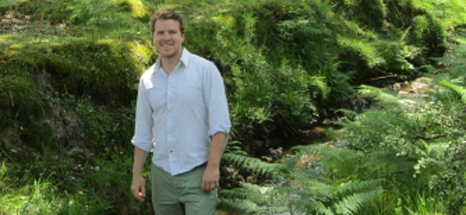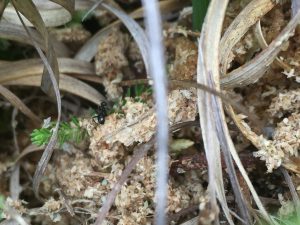 Nick Wardlaw is the Contract Manager for the Higher Level Stewardship at the Forestry Commission. He oversees on-the-ground work to restore wetlands and other precious habitats across the New Forest.
Nick Wardlaw is the Contract Manager for the Higher Level Stewardship at the Forestry Commission. He oversees on-the-ground work to restore wetlands and other precious habitats across the New Forest.
April is the time each year when we reflect on the hard work and achievements of the HLS team over the last 12 months.
At the scheme’s annual general meeting in the Verderer’s Hall I explain to the public the benefits our work has brought to the New Forest.
We’re lucky enough in the Forest to enjoy some really spectacular woodlands – but while many of us delight in spending time in the forest, whether it’s walking, cycling or spotting wildlife, few of us realise the depth of studying and planning that goes into protecting and safeguarding the habitat for future generations.
The HLS scheme funds projects in the New Forest to restore natural habitats, including my team’s work programme, which consists of many operations to improve the Open Forest.
About one-third of the New Forest is known as the Open Forest – the woodland, heath, boggy area and grassland where commoners’ animals graze. The livestock allows for the species-rich grassland surrounding the magnificent old trees to be maintained in the best condition.
Our work in this area includes the removal of pine and scrub that’s spreading out onto the rich and varied heathlands. This year this work took place at Longdown, Dibden, Fawley, Norley Mire, Ipley and Markway. It may look dramatic at first, but once we’ve remove the bushes and regrowth, it will allow for the heathlands and wood pasture to be grazed by the New Forest ponies and cattle, with the associated benefits for wildlife.
At sites such as New Park, Busketts Lawn, Boxwood Green and Beechwood Road, we’ve removed invasive rhododendron to prevent further spread and to prevent shading of native plant communities.
As well as all this practical restoration on the heathland, lawn and mire habitats, we continue to reverse the effects of artificial drainage that has occurred over the past 150 years within the mire and stream channels of the New Forest. Last year we started work to address the drainage that is having a negative impact on the floodplain habitats at Parkhill Lawn, near Lyndhurst and Wootton Riverine Woodland, near Sway.
The work aims to re-divert the water into the historical meanders, which will re-connect the streams with the floodplain more frequently during times of high flow, benefiting the species that depend on a naturally functioning system.
During 2016 we expanded our monitoring programme, including the recruitment of a devoted Monitoring Officer.
Environmental monitoring is particularly difficult, as it can often be limited by only being a ‘snapshot’ in time, however, we are committed to developing the monitoring of the work that we undertake in order to inform current and future work programmes. We are delivering this programme with the help from volunteers and specialists looking into a range of effected areas, such as geomorphology and individual species here in the New Forest.

An example would be our survey of the Black Bog Ant (above), one of the rarest ants in Britain, which the New Forest has more recorded sites than anywhere else in England. This particular species relies on a high water table, which is threatened by the past drainage activities with the Forest and is just one reminder of why the wetland restoration is so important for nature conservation.
So much has been achieved within 2016 it gives me great pride to see all the work the team has been able to accomplish. This is before we even factor in the other project work completed by the New Forest National Park Authority protecting archaeological sites and educating thousands of kids on school visits.
This year promises to be just as busy for the HLS team – I look forward to reflecting on another successful set of projects protecting the New Forest’s unique habitats this time next year!
The HLS scheme is an agreement with Natural England held by the commoning organisation The Verderers of the New Forest and managed by them in partnership with the Forestry Commission and the New Forest National Park Authority.